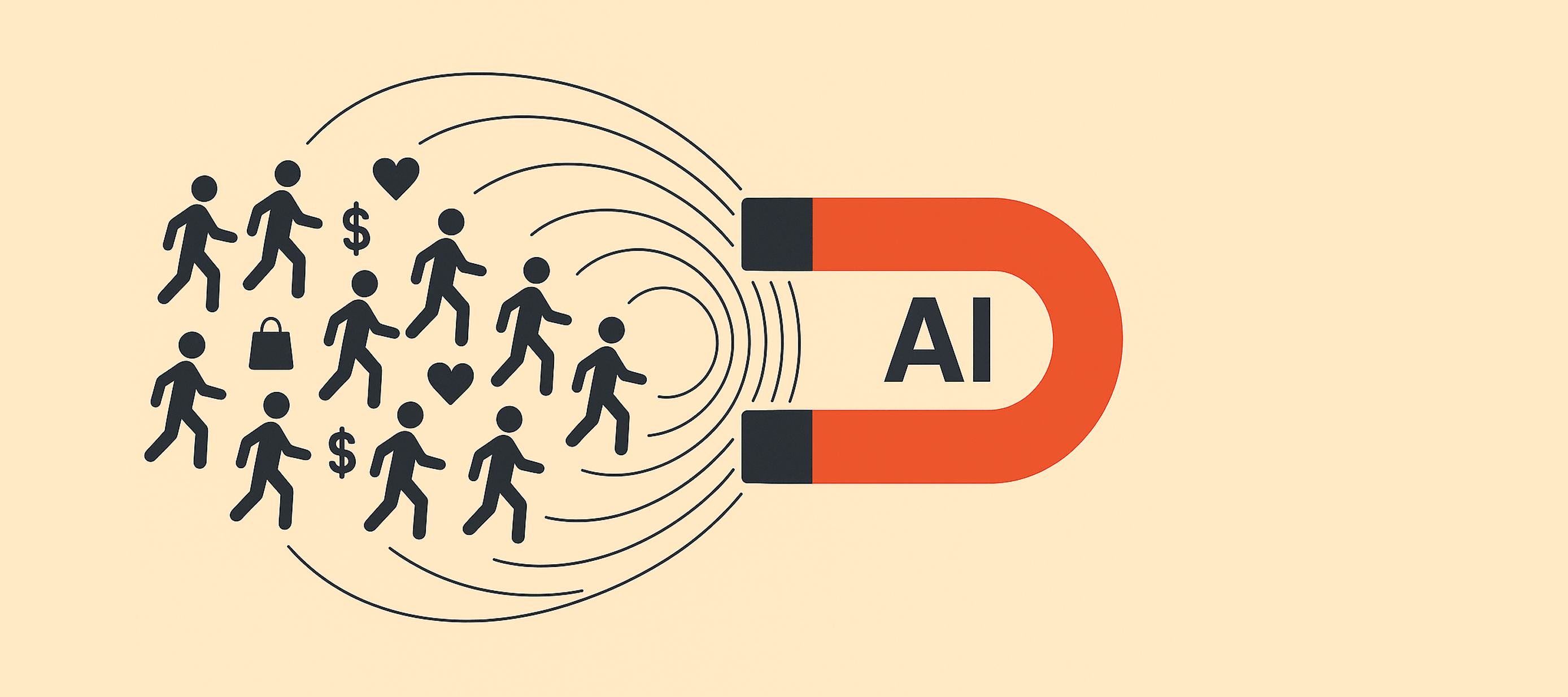
Marketing has always been about reshaping how people think and behave, but we're now on the verge of a transformation that could amplify persuasive power beyond anything we've seen before. A recent paper reported that messages tailored to their individual recipient by A.I. were significantly more persuasive than those that weren’t(1).
But first, to understand how this can be done, we have to understand why some messages persuade some people but not others.
Identical messages can deeply persuade some while leaving others unmoved. This happens because there are two distinct forms of persuasion, corresponding to our dual thinking modes: System 1 (fast, intuitive) and System 2 (slow, deliberate). This model, rooted in cognitive psychology, helps explain why the same message can produce very different reactions depending on the mindset of the recipient. Think of this as the mental hare and tortoise—one racing quickly on emotional instinct, the other moving slowly but with purpose.
The Psychology Behind Persuasion
The Elaboration Likelihood Model (ELM), developed in the 1980s, explains this phenomenon by identifying two distinct routes to persuasion(2):
System 1/Peripheral Route
When we're unmotivated to think deeply, we rely on quick mental shortcuts—source attractiveness, catchy slogans that rhyme, or simple gut feelings. At its most basic, this works through classical conditioning and the mere exposure effect. This accounts for most advertising: simple, positive messages repeated often to build brand awareness rather than convey complex information.
System 2/Central Route
When we're motivated to engage, we process factual, logical information more thoroughly. We compare, contrast, and connect ideas to existing knowledge. This creates stronger "memory hooks" and longer-lasting attitude change because we develop more reasons to believe in our new position.
We're "cognitive misers"—our energy-hungry brains prefer the easy route whenever possible. But several factors push us toward deeper processing: personal relevance, clear incentives to form an opinion, easily digestible information, and individual differences like high "need for cognition." In traditional marketing, predicting which route consumers take has always been a balancing act of creativity and guesswork.
But here's the challenge: determining which route each individual will take has required speculative and broad segmentation.
How Marketers Can Use This
With attention harder than ever to capture, understanding these persuasion dynamics is valuable. Not all messages lend themselves to deep thought, and peripheral messages, while potentially effective, may require constant repetition to stay active.
The key question: Are your target consumers likely to be highly involved with your message?
If you want lasting persuasion, make messages personally relevant and easy to digest to encourage central processing. When trying to convince consumers to buy something new or change behavior, understanding which consumers will be motivated to absorb complex messages becomes crucial.
Modern digital platforms—web articles, YouTube videos, interactive content—make it easier than ever to craft messages that work at both speeds simultaneously, appealing to both quick intuitive responses and deeper analytical thinking.
Success lies in knowing when to deploy which approach: when to target the hare brain and when to engage the tortoise mind. Until now, tailoring that decision to each individual in real time was beyond reach.
How A.I. Could Boost Persuasion
In short: A.I. could be about to bring us truly personalised persuasion at scale. A new paper in Scientific Reports (a Nature journal) reported on a series of studies involving almost 1800 people. First they answered some questions intended to classify their personality, and political and moral leanings. Then they were presented with a series of messages, ranging across experiments from promotional messages about products to campaigns for political causes.
Respondents were then asked to compare the ads using ratings of persuasion, memorability and willingness to pay or donate to a cause. The messages crafted by ChatGPT were significantly more persuasive than those by a human. They were also just as persuasive even when told they were being exposed to AI-generated ads tailored to persuade them.
You might think: ‘but we’ve already had personalised ads online for years, what's new?’ It’s the ability to generate new more highly personalised messaging. In the past we’ve had stock messages delivered to different people based on things like the cookies on their computer that provide the advertiser with information on past user behaviour. But now this information about users could be more valuable than ever as it is the key to providing personalised persuasion at scale.
Tthe difference with AI is twofold. Firstly, the personality or political traits of the individual can be better predicted from their online behaviour. And secondly, the large language models, like chatGPT, have the ability to automatically craft new messages based on inputs like personality information.
These findings aren’t a green light just yet, but they could be an early indicator of what might be possible in the near future. So far the evidence is just from one study in the United States, using text stimuli, not those that also use images or video. But it shows that there is potential in this approach.
Of course, A.I. algorithms need to know us in order to personalise messages for us. But one interesting finding in the paper is that even information on a single personality trait (e.g. the person is high in ‘agreeableness’) was enough to improve the effectiveness of the messaging.
Beyond customising what is said, A.I. might also reshape how it’s said. Another possible way A.I. could be used to persuade is through condensing down complex information into simpler, more easily-digestible messages. In effect, transforming what traditionally would have been a System 2/Central type of slow persuasive message into one that can work at high speed.
As with any powerful tool, the ethical implications of AI-driven persuasion can’t be ignored. And, obviously, there are more nefarious uses of online persuasion: the dreaded ‘misinformation’. Yet there could also be forms of persuasion that benefit people, such as convincing them to take part in healthier behaviours.
No one really knows how this will play out, but it seems likely that marketing communication will become even more personalised, more dynamic, and increasingly shaped by data. For marketers, this may mean developing a better understanding of the personal characteristics that predict a consumer’s motivation to engage more deeply with a topic. And for consumers, it signals that personal data is set to become even more valuable—not just for deciding who sees what, but for influencing how messages are crafted to target individual differences.
References
(1) Matz, S.C., Teeny, J.D., Vaid, S.S., Peters, H., Harari, G.M. and Cerf, M. (2024) ‘The potential of generative AI for personalized persuasion at scale’, Scientific Reports, 14, Article number: 4692. doi:10.1038/s41598-024-53755-0.
(2) Orazi, D.C., Hamby, A., Herhausen, D., Van Laer, T., Ludwig, S., Gonsalves, C. and Grewal, D., 2025. Verbal persuasion in marketing: A multimethod meta-analysis of analytical and narrative processing. Journal of the Academy of Marketing Science, pp.1-24.





